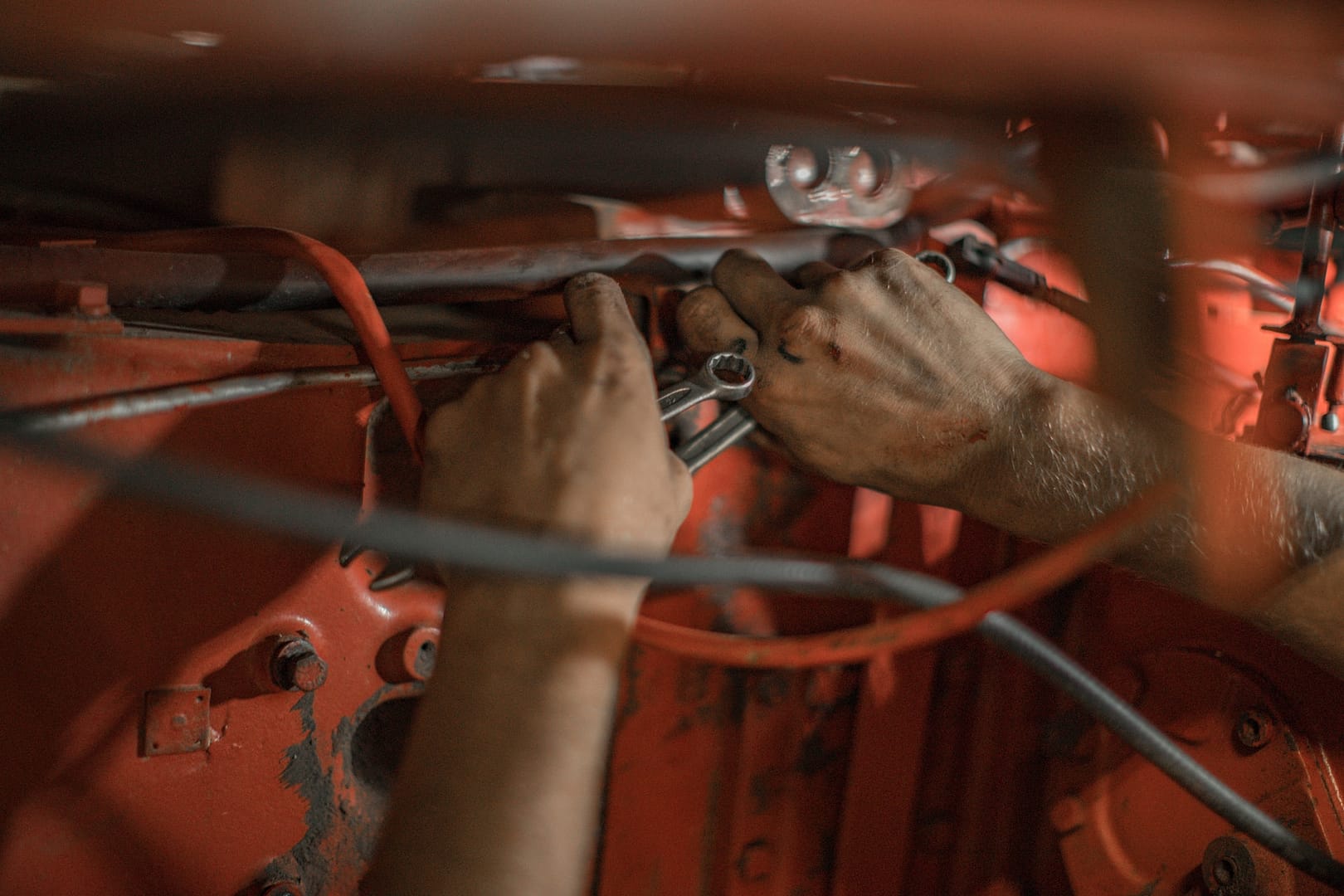Accidents at work can happen when you least expect them, often with devastating consequences. From minor mishaps to life-altering incidents, workplace accidents pose a constant threat to employees across various industries. But what if I told you that many of these accidents are preventable? In this article, we’ll explore the three types of accident prevention and delve into the recommended steps to ensure your safety while on the job. We will also explain the best way to start a claim for your accident at work.
The Three Types of Accident Prevention
When it comes to avoiding accidents at work, prevention is the key. Prevention strategies typically fall into three categories:
Primary Prevention
Primary prevention focuses on eliminating hazards or reducing the likelihood of an accident occurring in the first place. Think of it as stopping accidents at the source. This approach involves identifying potential risks, assessing them, and taking proactive measures to remove or control them. Let’s take a look at a hypothetical scenario involving a manufacturing facility.
Imagine you work in a factory where heavy machinery is used daily. One primary prevention measure would be to ensure that all employees are properly trained to operate the machinery safely. This includes understanding the equipment’s functions, maintenance protocols, and emergency shutdown procedures. By educating the workforce and implementing strict safety protocols, the risk of accidents caused by operator error is significantly reduced.
Secondary Prevention
Secondary prevention aims to minimise the harm caused by an accident after it has occurred. While it’s always best to prevent accidents in the first place, secondary prevention measures can save lives and reduce the severity of injuries when accidents do happen. An example of this can be found in the construction industry.
Consider a construction site where workers are exposed to the risk of falling from elevated platforms. To implement secondary prevention, the site could require all workers to wear personal protective equipment (PPE) such as helmets, harnesses, and safety nets. These measures won’t prevent falls entirely, but they can mitigate the damage by reducing the impact and increasing the chances of survival.
Tertiary Prevention
Tertiary prevention comes into play after an accident has occurred. Its primary goal is to provide immediate care and rehabilitation to the injured party, helping them recover and return to work as soon as possible. A real-life example of tertiary prevention can be seen in the healthcare industry.
Consider a nurse who slips and falls while attending to a patient, resulting in a fractured arm. Tertiary prevention would involve prompt medical attention, including setting the fracture, administering pain relief, and providing physical therapy to aid in the nurse’s recovery. By ensuring swift and effective treatment, the healthcare facility can minimise the nurse’s time off work and prevent any long-term complications.
Recommended Steps to Prevent Accidents at Work
Now that we’ve explored the three types of accident prevention, let’s dive into the recommended steps to avoid accidents at work. These steps apply across various industries and can make a significant difference in ensuring workplace safety.
Conduct a Thorough Risk Assessment
The first step in preventing accidents at work is to identify potential hazards. Conducting a comprehensive risk assessment is essential. This involves evaluating the workplace environment, equipment, and processes to pinpoint any factors that could lead to accidents. A risk assessment should be an ongoing process, regularly updated to account for changes in the workplace.
Provide Adequate Training
As demonstrated in the primary prevention example earlier, training is crucial. Ensure that all employees receive proper training in their job tasks, equipment operation, and safety protocols. This training should be comprehensive, clear, and easily accessible to all staff members, including new hires.
Encourage Open Communication
Communication is key to accident prevention. Encourage employees to report potential hazards or unsafe conditions promptly. Establish a culture where workers feel comfortable speaking up about safety concerns without fear of repercussions. Their input can lead to early identification and resolution of issues before accidents occur.
Implement Safety Policies and Procedures
Develop and enforce safety policies and procedures specific to your workplace. These should cover everything from emergency response plans to the proper use of safety equipment. Regularly review and update these policies to ensure they remain relevant and effective.
Provide Personal Protective Equipment (PPE)
Depending on the nature of the work, personal protective equipment (PPE) may be necessary. Ensure that employees have access to the appropriate PPE and are trained in its correct usage. Regularly inspect and maintain PPE to ensure it remains in good condition.
Regularly Inspect and Maintain Equipment
Faulty or poorly maintained equipment can lead to accidents. Implement a regular inspection and maintenance schedule for all machinery and tools. Address any issues promptly to prevent potential accidents.
Promote Ergonomics
Ergonomics plays a significant role in preventing workplace injuries. Ensure that workstations are ergonomically designed to reduce the risk of musculoskeletal disorders. Encourage employees to take breaks and practise good posture to minimise strain.
Conduct Safety Drills
Regular safety drills help prepare employees for emergency situations. Whether it’s a fire drill or an evacuation exercise, these drills ensure that everyone knows what to do in case of an emergency, reducing panic and confusion.
Investigate and Learn from Incidents
When accidents do occur, it’s essential to conduct thorough incident investigations. Determine the root causes and use these findings to improve safety measures. Learning from past incidents can help prevent similar accidents in the future.
Stay Informed About Regulations
Laws and regulations regarding workplace safety can change. Stay informed about current regulations relevant to your industry and location, and ensure that your workplace is compliant. Failure to comply with safety standards can result in penalties and increased accident risks.
Making an Accident at Work Claim with National Claims
Hello, and welcome to National Claims! We understand that accidents at work can be not only physically painful but also emotionally and financially challenging. That’s why we’re here to guide you through the process of making an accident at work claim to ensure you receive the compensation you deserve.
Understanding Your Rights
Before diving into the claims process, it’s essential to understand your rights as an injured employee. In the UK, the law is clear: if you’ve been injured in an accident at work due to your employer’s negligence, you have the right to seek compensation. This compensation is meant to cover medical expenses, loss of earnings, and any other costs incurred as a result of the accident.
The Claims Process
Seek Medical Attention
Your health should be your top priority. If you’ve been injured at work, seek immediate medical attention. Your well-being is of utmost importance, and your medical records will serve as essential evidence in your claim.
Notify Your Employer
It’s crucial to inform your employer about the accident as soon as possible. This notification should be in writing and include details of the accident, the date and time it occurred, and any witnesses present. Your employer is legally obligated to record the incident in an accident book.
Gather Evidence
To build a strong case, gather as much evidence as possible. This may include photographs of the accident scene, any faulty equipment, or hazardous conditions. Collect witness statements if applicable, as these can provide valuable support for your claim.
Consult with National Claims
Once you’ve taken the necessary steps to ensure your well-being and gather evidence, it’s time to consult with National Claims. Our team of experienced solicitors specialises in accident at work claims. We’ll assess the details of your case and provide you with expert advice on the strength of your claim.
Start the Claim Process
If we determine that you have a viable claim, we’ll help you initiate the process. This involves sending a letter of claim to your employer or their insurance company, outlining the details of the accident and the compensation you are seeking.

Why Choose National Claims?
At National Claims, we have a deep understanding of the physical, emotional, and financial toll accidents at work can take on individuals and their families. We are committed to providing personalised support and guidance throughout the claims process. Here’s why you should choose us:
Expertise
Our team of claims specialists are well versed in accident at work claims. We have a wealth of experience and a proven track record of success.
Compassion
We understand the challenges you’re facing. Our compassionate approach ensures that you receive the support you need during this difficult time.
No Win, No Fee
We operate on a “No Win, No Fee” basis, meaning you won’t have to pay any legal fees unless we secure compensation for you.
Dedication
We are dedicated to fighting for your rights. Your well-being and the success of your claim are our top priorities.
Conclusion
Accidents at work can be life-changing, but with the right support, you can recover physically, emotionally, and financially. At National Claims, we’re here to help you navigate the process of making an accident at work claim. Remember, it’s your right to seek compensation if you’ve been injured due to your employer’s negligence.
Follow the steps outlined above, prioritise your health and well-being, and trust in our expertise to guide you through the claims process. With National Claims by your side, you can focus on your recovery while we work diligently to secure the compensation you deserve.
Don’t let an accident at work define your future. Contact National Claims today, and let us help you take the first steps toward a brighter tomorrow.
Contact us today to speak with one of our claims specialists and they will be able to help you start your claim.
Click below to see why we are one of the most trusted claims management companies in the UK.

We’re proud of our excellent customer reviews
We thrive on delivering exceptional service and ensuring our clients’ satisfaction. Don’t just take our word for it. Check out some of our independent reviews to see what our clients have to say.
Excellent

This firm is excellent, they sorted out my car pay out and injury claim very fast, they always communicate with you all the time.

My accident case was dealt with confidence and with great result of the outcome, especially James kept me informed all the time.

I was very impressed at the way my inquiry was treated. I was listened to attentively and everything I needed to know was explained to me.






